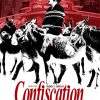Contents
Sharpe ratio also does not indicate if a portfolio is concentrated into a single sector, which might be very risky for a retail investor. That is why this ratio must be used in addition to other parameters. The standard deviation https://1investing.in/ figures also assume that price movements in either direction are equally risky. The Sharpe ratio gives the return delivered by a fund per unit of risk taken. Therefore, the higher the Sharpe ratio, the better it is for investors.

In addition to return and risk, factsheets provide information of some risk-adjusted return measures such as Sharpe Ratio and Treynor Ratio. These risk-adjusted performance measures assess the performance of a fund in terms of return per unit of risk. Information ratio is used to measure the performance of an active fund manager. It is expressed as the active return or alpha (α) of a portfolio divided by the tracking error. Active return or alpha return is the excess return generated by the fund over its benchmark.
INVEST IN CURATED STOCK & ETF PORTFOLIOS
It measures the excess return generated by a portfolio over the risk free rate in relation to the total risk or standard deviation of a portfolio. Sharpe ratio is used to understand the relation between expected returns and volatility levels of a portfolio that helps compare different funds. But this ratio includes some impractical assumptions which is one of the major reasons why the sharpe ratio should not be looked at in isolation to make investment decisions. The Sortino ratio, often referred to as an improved version of the sharpe ratio, only assumes the downside volatility that matters to the investors. It helps in comparing different funds which might be giving similar returns but the exposure to risk might be much more in one of them. Sharpe ratio indicates investors’ desire to earn returns which are higher than those provided by risk-free instruments like treasury bills.
On the site we feature industry and political leaders, entrepreneurs, and trend setters. The research, personal finance and market tutorial sections are widely followed by students, academia, corporates and investors among others. A mutual fund with an up-market capture ratio above 100 denotes that it has performed better than the benchmark. For instance, if the ratio is 110, it indicates that the fund has outperformed the index by 10%. It measures the risk-adjusted returns of a portfolio based on the standard deviation of its gains. Its beta value is 1.3, meaning it’s 30% more volatile than the market.
Risk-averse investors would like to have the beta on the lower side as it is indicative of steady returns and response to market volatility. There are a variety of ways to measure this likelihood, the most common of which is the standard deviation of returns, or SD. This figure helps investors understand how widely returns may fluctuate around their average. Suppose a fund is made of only technology stocks and sector performs well. The fund’s Sharpe ratio will be very high, but simultaneously it will be a risky proposition for an investor looking for moderately risk investment.

Contrarily, investments with a Sharpe Ratio of 1.00 to 3.00 or above have higher returns subsequently. 4) Sharpe Ratio is used to evaluate a mutual fund which is considered not a good strategy. 2) It considers all the investments to have a normal pattern for the dispersion of returns, but funds may have different dispersion patterns.
# The Variance shows the variation of a fund’s price from its average and represents the fund’s volatility in its price over a period. Investors’ risk appetite may fluctuate with the market good sharpe ratio and evolve over time. Ask on December 31, 2019, years into a bull market, during a period of relative calm, to rate my willingness to take risk, and I’ll tell you I’m happy to pour it on.
Top Fund Houses
The return of the fund is the return that your fund manager generates in absolute terms. Here, risk-free return is what you would have earned without any risk as in case of a bank FD or a 10-year government bond. More volatile the returns of the fund, higher the standard deviation. To understand these ratios, let us first understand the types of risk of a fund. Total risk of a portfolio is measured by the standard deviation of its returns. The total risk actually consists of systematic risk and unsystematic risk.
No need to issue cheques by investors while subscribing to IPO. No worries for refund as the money remains in investor’s account.” Finally, it must be remembered that most portfolios disclose Sharpe as there is less of index bias in them.
What is Beta Ratio?
Here, our financial experts use financial ratios to provide you with the best funds in which you can invest in a hassle-free and paperless manner. Sharpe ratio can be used as a tool to compare funds placed in the same category as analysing the performance of Fund A and Fund B, which are large-cap equity funds. In this way, you will ensure that both the funds are facing a similar level of risk. Conversely, you might compare funds giving the same returns but which are at different levels of risk. The risk inherent in an investment is determined using the standard deviation.
It tells of returns earned in excess of risk free rate per unit of volatility. In simple words, it helps in ascertaining the profits earned because of extra risk taken in investing in the security. The normal performance metrics of a mutual fund investmentsis whether the fund has actually beaten the index or not. So if the Nifty index has earned 16% returns last year and your fund has earned 18% last year then your fund has outperformed the index by 200 basis points. This is a very simple and elegant measure that appeals to every investor. But then this measure only looks at the returns and not the risk.
So, Treynor must be a more ideal measure for evaluating fund performance. Thus, any difference in mutual fund rankings based on these two ratios is due to the difference in the level of portfolio diversification. Treynor Ratio measures the efficiency with which the fund manager has allocated the fund’s assets to compensate the investor for taking the given level of risk. Treynor Ratio exclusively focuses on how well the portfolio has performed in the backdrop of risks prevailing in the economy.
We shall see the significance of this aspect later when we assess how to choose between the Treynor ratio and the Sharpe ratio. Is part of the IIFL Group, a leading financial services player and a diversified NBFC. The site provides comprehensive and real time information on Indian corporates, sectors, financial markets and economy.
- A higher Sharpe ratio means, a higher return without too much risk.
- Having understood Sharpe and Treynor ratios, here is why they are important.
- In the case of Sharpe, you would have used standard deviation instead of Beta; that is the only difference.
In the last 20 months, over 20 Factor Funds have been launched by mutual fund houses. And one of the primary reasons for their popularity is that Factor Funds combine the best features of ac… A FREE assessment that tells you what kind of investor you are, your risk tolerance levels, and a lot more. You can take any rate of return, like 365 days treasury bill return or State Bank of India’s FD return. R is the historic return of the fund for which you are calculating the Sharpe Ratio.
Limitations Of Sharpe Ratio
When looking at actively managed equity funds, we always look for alpha – the excess return over benchmark that the fund manager has produced. Alpha is widely regarded as the best metric to measure outperformance. In the Information ratio, we consider not only the alpha but also the degree of variability in the alpha that this fund manager has produced from time to time. When Treynor ratio or return per unit of systematic risk is calculated it is evident that the manager of Fund B has actually done better. Fund Alpha has certainly earned higher return but that has come at the cost of much higher risk. In the case of Sharpe, you would have used standard deviation instead of Beta; that is the only difference.
Generally, it is calculated every month and then annualised for easy comprehension. Just as with any investment, all mutual funds come with possible downside risk. However, some schemes have a better ability to manage the downside risk and thereby optimise the returns. Thus, the Sortino Ratio is an important ratio to measure risk-adjusted returns. As mentioned earlier, the difference between Sharpe and Treynor is that the former uses the standard deviation as the denominator while the latter uses the Beta as denominator.
The ratio can be expressed as excess return generated by the fund over the risk free rate divided by the systematic risk or beta. Higher the Sharpe Ratio, better is the fund on a risk adjusted return metric. Hence, our primary judgement based solely on returns was erroneous. Fund B provides better risk adjusted returns than Fund A and hence is the preferred investment.
Sharpe Ratio calculates the fund’s return in excess of the risk-free return and divides the excess return by the portfolio’s standard deviation. It enables investors to compare across investment opportunities. Higher the Sharpe Ratio, better is the ‘Reward to Variability’. A fund with a higher Sharpe Ratio in relation to another is preferable as it indicates that the fund has generated better return for every unit of risk. Sharpe Ratio plays a significant part in evaluating the performance of an investment. Developed by American economist and Noble laureate William F. Sharpe, the Sharpe Ratio measures the risk-adjusted returns of an investment.










Recent Comments